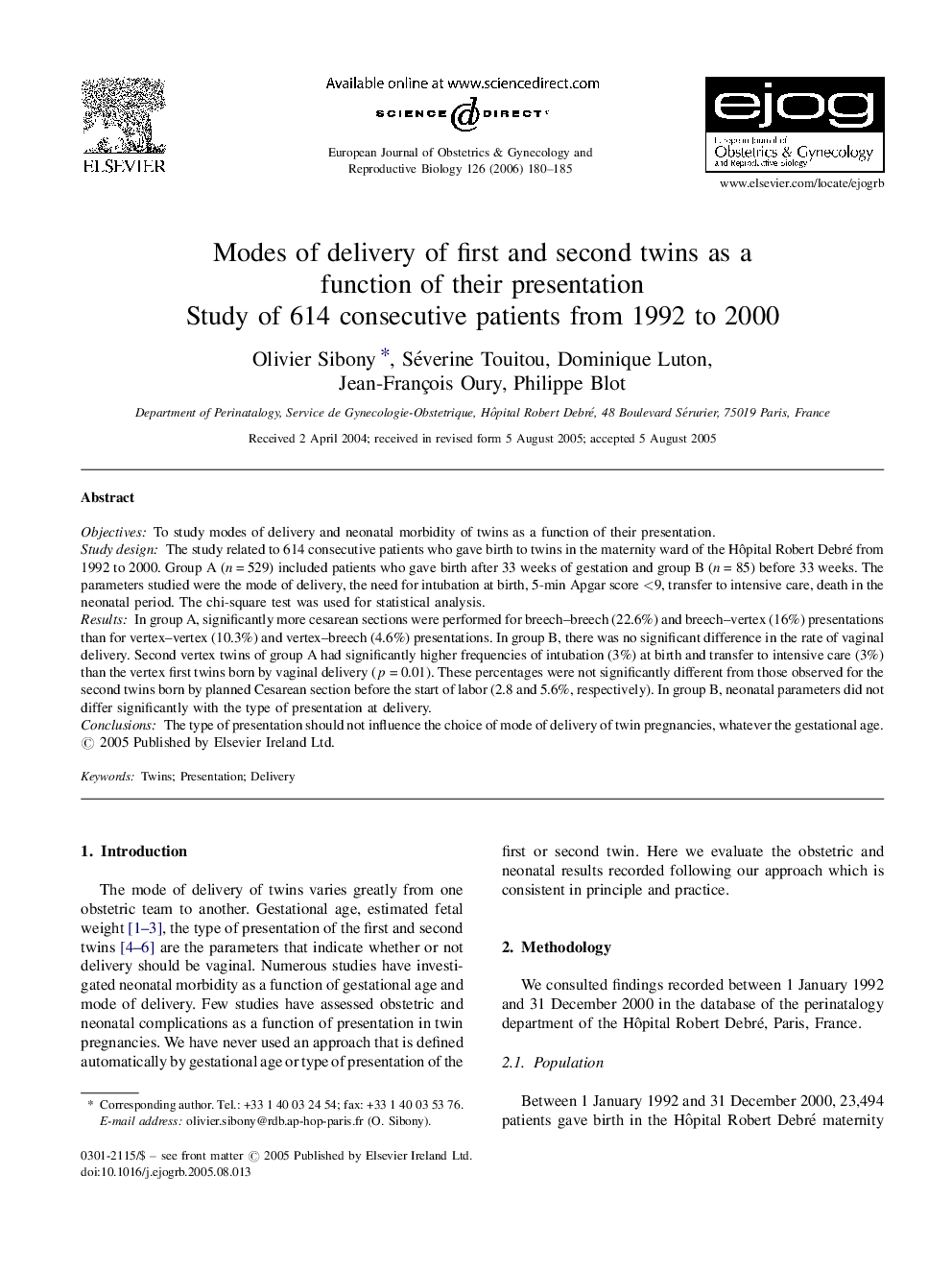| کد مقاله | کد نشریه | سال انتشار | مقاله انگلیسی | نسخه تمام متن |
|---|---|---|---|---|
| 3922169 | 1599900 | 2006 | 6 صفحه PDF | دانلود رایگان |

ObjectivesTo study modes of delivery and neonatal morbidity of twins as a function of their presentation.Study designThe study related to 614 consecutive patients who gave birth to twins in the maternity ward of the Hôpital Robert Debré from 1992 to 2000. Group A (n = 529) included patients who gave birth after 33 weeks of gestation and group B (n = 85) before 33 weeks. The parameters studied were the mode of delivery, the need for intubation at birth, 5-min Apgar score <9, transfer to intensive care, death in the neonatal period. The chi-square test was used for statistical analysis.ResultsIn group A, significantly more cesarean sections were performed for breech–breech (22.6%) and breech–vertex (16%) presentations than for vertex–vertex (10.3%) and vertex–breech (4.6%) presentations. In group B, there was no significant difference in the rate of vaginal delivery. Second vertex twins of group A had significantly higher frequencies of intubation (3%) at birth and transfer to intensive care (3%) than the vertex first twins born by vaginal delivery (p = 0.01). These percentages were not significantly different from those observed for the second twins born by planned Cesarean section before the start of labor (2.8 and 5.6%, respectively). In group B, neonatal parameters did not differ significantly with the type of presentation at delivery.ConclusionsThe type of presentation should not influence the choice of mode of delivery of twin pregnancies, whatever the gestational age.
Journal: European Journal of Obstetrics & Gynecology and Reproductive Biology - Volume 126, Issue 2, June 2006, Pages 180–185